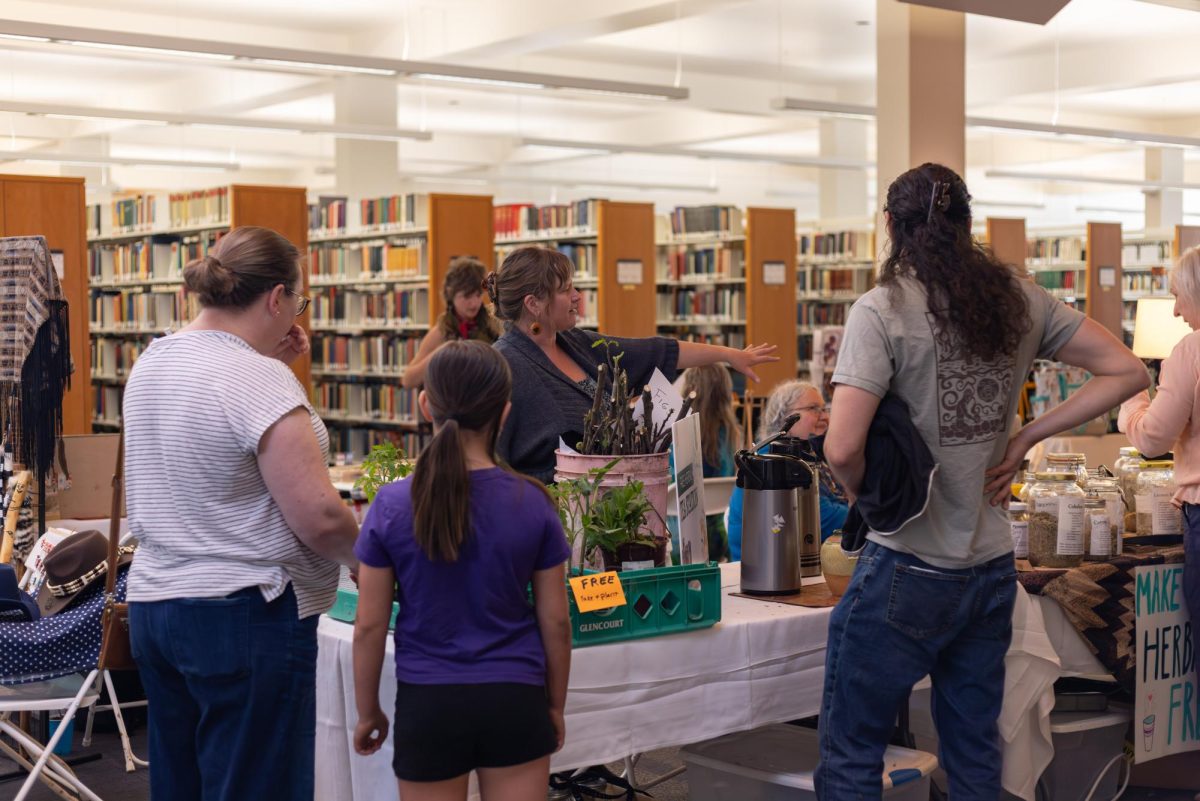Claire Oliver. As Linfield’s newest campus publication, The Oven aims to serve as a forum for student-driven discussion and ideas when its first issue of the year hits countertops Oct. 2.
The idea for the publication originally came from junior Ryland Hutchison and was expanded by junior Sarah Valentine, who handed the reins to senior Beth Satterwhite when both realized they didn’t have enough time to devote to the project.
Whereas more traditional magazines focus on current events, Satterwhite said she drew inspiration from self-published zines in developing The Oven.
“It’s not just what’s going on … it’s what you think about what’s going on,” she said.
Satterwhite said all students are invited to contribute and that the form and content of each issue is determined by the pieces submitted.
The Oven’s debut issue last spring, for example, featured poems, short stories, essays and excerpts on everything from nature to consumer culture.
“Articles range from our ideas about the government, religion and spirituality, art, the economy, music, food and much more,” junior Katie Kann, an Oven contributor, said in an e-mail. “Some topics are more serious than others, but it’s completely up to the student author if they want to be objective or subjective, serious or silly.”
More than anything, The Oven is meant to be a forum for issues that affect students outside of the classroom, Satterwhite said.
“If people have things to say, it’s a place to say them,” she said.
In this way, The Oven creators said their publication differs from CAMAS and The Linfield Review.
“I think in a way it combines the two but also offers something completely different,” Valentine said in an e-mail. “We publish world news, national news and community news, which I think is very important, because I feel like, as students, we often get caught in this campus bubble and kind of forget that there is another world outside of Linfield.”
Whereas CAMAS is published annually, students don’t have to compete for space in The Oven, Satterwhite said, and there is minimal editing of submissions.
“Generally, our philosophy is the more controversial, the better: Voice your opinion, be radical,” Kann said. “Speak out about what you believe in, make it persuasive, argumentative and unconventional.”
For more information about The Oven, contact Satterwhite at [email protected].
New sitcom provides an excuse to swoon Bree Adams
I am a gleek. No, it’s not a typo. It’s the term for über-fans of the TV show “Glee.” These are people who get prepubescent-girl-at-a-boy-band-concert crazy over the show, buying the merch, hosting watching parties, shushing you in the middle of your conversation when the commercial break ends.
But, for all my excitement and enthusiasm, I often wonder if my love for the show simply comes from a place that titillates toddlers into making TV a convenient babysitter: bright colors, expressive faces and lots of music.
Stripped to basics, “Glee” is the traditional high school sociology story with all parties pining for or fearing that they’re teetering on the edge of what is cool.
Lea Michele is the star. You might recognize her from several Broadway plays, including the musical “Spring Awakening,” which has also seen its share of teenage fad fame. She plays Rachel Berry, the leader of the lowest level on the clique totem pole: the glee club.
The club is like the love child of a show choir and a dance team, a combination that has the potential to be an entertaining, socially acceptable club. Its downfall may be, unfortunately, a conglomeration of people with attributes society sometimes finds too uncomfortable to mention: Berry has two gay fathers; Artie Abrams is in a wheelchair; Mercedes Jones is an overweight black girl and Kurt Hummel is in the closet.
At the top of the social hierarchy are the Cheerios, the cheerleaders. Their presence is comical because they wear their uniforms in every shot. The group is coached by Sue Sylvester, played by Jane Lynch, who encompasses the ball-busting role she plays often and well. Once she perceives the glee club as a threat to the Cheerios’ popularity, she spends each episode devising elaborate plans to destroy them, sometimes using the cheerleaders themselves as pawns.
Few things are as entertaining as adults acting like children, and, in this area, “Glee” doesn’t disappoint.
Head cheerleader Quinn Fabray attempts to destroy the club for over-determined reasons: for power, but also to win back her jock boyfriend, Finn Hudson. He — you guessed it — is attracted to Berry. There have to be enough silk strands to get everyone tangled in the web.
But wait. As the infomercials say, there’s more.
That’s only the dynamics of the students. The glee club coach, Will Schuester, has feelings for a fellow teacher, Emma Pillsbury. Both are endearing characters, and actress Jayma Mays redeems herself, in my mind, from previous prejudices developed from her time spent playing Henry’s conniving pregnant girlfriend on “Ugly Betty.”
Speaking of pregnant, Schuester is married to a woman who makes Woody Allen look calm, and she’s pretending she’s knocked up, becoming more desperate as time rolls on.
Both the Hudson-Berry relationship and the Schuester-Pillsbury relationships demonstrate how easily an audience can be manipulated into cheering for something they never would have in real life, such as infidelity. Viewers are mesmerized by the shiny veneers and quirky fashions and find themselves making exceptions.
All this drama is interrupted by random glitzy interludes of choreographed dance routines married to a cappella. I’ve only seen one instance that suspiciously resembled lip syncing.
These are the best moments of the show: anything from Journey’s “Don’t Stop Believing” to Kanye’s “Gold Digger,” the radio-edited version, of course. My personal favorite was their unintentionally hilarious rendition of Salt ‘n’ Pepa’s “Push It,” in which the club sexes it up to recruit new members. Even the background music throughout the show is a cappella.
All in all, it’s a fun show. It keeps the energy up with perky, earnest characters, close-ups and sharp cuts between scenes.
The characters may be two-dimensional, but they deeply believe in their own causes, which makes you pay attention and root for them.
Besides, the whole shindig seems lighthearted, even spoofing previous shows and stereotypes while finding a niche of its own. Who wouldn’t want to see that?
“Glee” can be seen at 9 p.m. Wednesdays on FOX Channel 12.
Categories:
The Oven: a special blend of ingredients
September 25, 2009
Tags:
More to Discover






